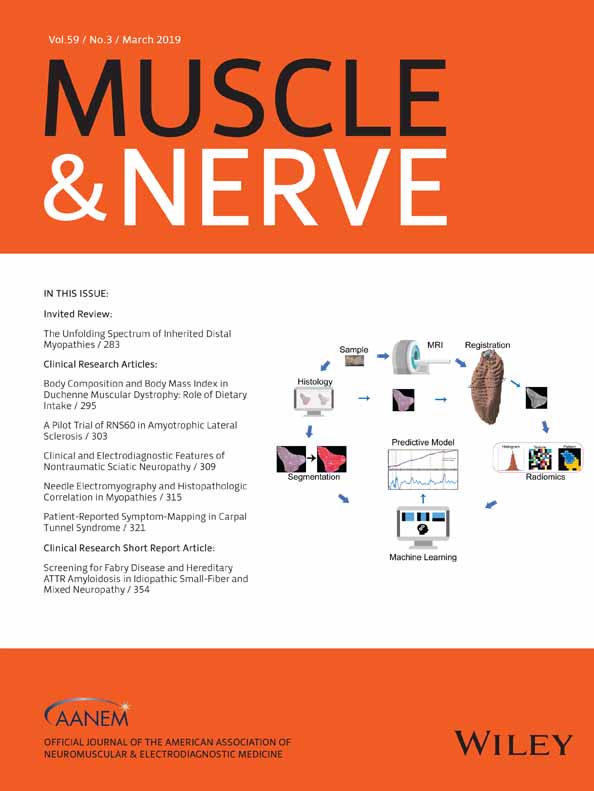Clinical and Electrodiagnostic Features Of Nontraumatic Sciatic Neuropathy
ABSTRACT
Introduction: In this study we sought to characterize etiologies and features of sciatic neuropathy unrelated to penetrating nerve trauma. Methods: This investigation was a retrospective review of 109 patients with electrodiagnostically confirmed sciatic neuropathies. Results: Hip replacement surgery represented the most common (34.9%) etiology, whereas inflammatory sciatic neuropathy was seen in 7.3%. Electrodiagnostic testing revealed an axonal neuropathy in 95.4% and a demyelinating neuropathy in 4.6%. Predominant involvement of the peroneal division was seen in 39.4% and was tibial in 5.5%. Nine of 31 (29.0%) patients who had MRI or neuromuscular ultrasound study showed abnormalities within the sciatic nerve. At the final visit, 46.4% of patients required assistance for ambulation. Young age, lack of severe initial weakness, and presence of tibial compound muscle action potential or sural sensory nerve action potential were predictors of favorable outcome. Discussion: Sciatic neuropathies are usually axonal on electrodiagnostic testing, affect preferentially the peroneal division, and are commonly associated with incomplete recovery. Muscle Nerve 59:309–314, 2019




